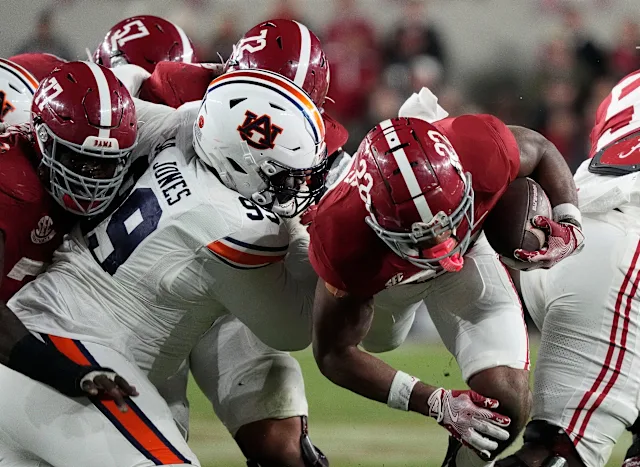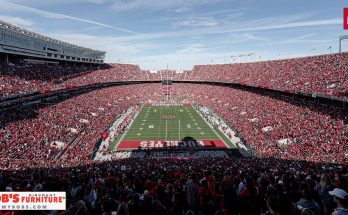The Iron Bowl is more than just a football game—it’s a cultural event, a clash of pride, tradition, and identity that defines the state of Alabama and often shapes the national college football landscape. Every year, when the Alabama Crimson Tide and the Auburn Tigers face off, the stakes go beyond records or playoff implications. According to The Athletic, the Iron Bowl stands as arguably the greatest rivalry in college football, a distinction earned not only through thrilling games and dramatic moments but by the intensity and meaning it holds for everyone involved.
The history of the Iron Bowl dates back to 1893, but it has evolved far beyond a simple regional rivalry. The game has witnessed dynasties rise and fall, national championship dreams born and shattered, and legendary coaches cement their legacies. In a sport filled with fierce matchups—Ohio State vs. Michigan, Army vs. Navy, Texas vs. Oklahoma—the Iron Bowl stands out for its blend of in-state passion, consistent national relevance, and unforgettable moments that echo through generations.
What sets the Iron Bowl apart, The Athletic notes, is the emotional gravity it holds. In Alabama, you’re either born a Tiger or a Tide fan, and there’s little room in between. Families have been divided, marriages tested, and friendships paused every November. It’s not hyperbole—this rivalry influences politics, media, and everyday interactions throughout the state. It’s the lens through which fall Saturdays are viewed, and for many, it’s the defining moment of the football season.
The Athletic explored key themes that highlight the Iron Bowl’s supremacy in college football’s long list of rivalries. First, there’s the undeniable quality of competition. Both Alabama and Auburn have been championship-caliber programs. Alabama, under Nick Saban, has dominated the modern college football era, but Auburn has consistently been the one opponent capable of throwing a wrench into the Tide’s postseason plans. Whether it’s Chris Davis returning a missed field goal for the most famous walk-off in the sport’s history or the Tigers derailing another potential playoff run, Auburn has refused to play the underdog role quietly.
That leads to the second point: the Iron Bowl delivers moments. Big ones. Game-changing plays, miraculous endings, and performances that become part of SEC folklore. In 2013, “Kick Six” didn’t just win a game—it became a cultural phenomenon, the type of moment that transcends sport and gets replayed forever. The Athletic rightly points out that no other rivalry consistently produces as many epic, narrative-shifting moments as the Iron Bowl.
Third is relevance. Rivalries can be rich in tradition but lacking in modern implications. That’s not the case here. The Iron Bowl often determines who will represent the SEC West in the conference championship game, and in several cases, who gets a shot at the national title. When Alabama and Auburn are both elite—which they often are—the Iron Bowl becomes more than an in-state battle. It becomes the most important game in the country.
Coaching legacies are another layer The Athletic explored in making the case for the Iron Bowl’s greatness. From Bear Bryant to Pat Dye, Gene Stallings to Tommy Tuberville, and most recently Gus Malzahn and Nick Saban, careers have been defined and reshaped by what happens in the Iron Bowl. Win, and you’re a hero. Lose, and your seat may begin to heat up. Few games have such immediate and long-lasting consequences for the men leading the programs.
There’s also the parity factor. While Alabama has historically had more overall success, Auburn has punched back with enough force and frequency to keep the rivalry compelling. In the 2000s alone, Auburn had a six-game win streak, including a stretch where they outclassed Alabama physically and tactically. Even during Alabama’s dynastic run under Saban, Auburn has been a thorn in their side—a fact that only adds tension to every meeting.
The cultural aspect cannot be ignored either. The Athletic dives into how deeply rooted the Iron Bowl is in Alabama’s identity. There’s no pro sports team in the state. College football is the professional league in Alabama, and the Iron Bowl is its Super Bowl. It’s a source of pride, a symbol of loyalty, and for many, a yearly litmus test of how their fall—and often, their entire year—will be remembered.
While other rivalries may have bigger stadiums or more geographically diverse fan bases, few, if any, match the emotional weight carried by the Iron Bowl. The game isn’t played on neutral ground; it rotates between Tuscaloosa and Auburn, enhancing the animosity and giving fans a deeply personal connection to every down. The pageantry, the hostility, and the sheer noise of the Iron Bowl create an atmosphere unlike any other. For a week—or a month—leading up to the game, it’s all anyone talks about in Alabama.
Even in years when one team appears to be outmatched, the Iron Bowl refuses to follow the script. That unpredictability is part of its magic. Just ask Alabama fans about 2017, when Auburn shocked the Tide at Jordan-Hare Stadium. Or 2019, when Auburn outdueled a top-ranked Alabama team in a 48–45 thriller. No matter the rankings or odds, the Iron Bowl lives in a realm of chaos where emotion often trumps logic.
The Athletic’s analysis is not just about history and emotion—it also focuses on the broader impact of the rivalry. The Iron Bowl draws massive national ratings, influences Heisman campaigns, and shifts recruiting momentum. A win can energize a fan base and draw top-tier prospects; a loss can stall progress and open the door for criticism. It’s not just a game—it’s a measuring stick for where a program stands.
And in this new era of college football—where NIL, conference realignment, and playoff expansion threaten traditional rivalries—the Iron Bowl remains untouchable. Its relevance doesn’t rely on television markets or playoff brackets. It thrives because of what it means to the people who live it. According to The Athletic, the Iron Bowl’s resilience in this ever-changing landscape only solidifies its claim as college football’s premier rivalry.
There’s also the human element that The Athletic captures well. From Cam Newton’s comeback in 2010 to Tua Tagovailoa’s injury-altered trajectory, the Iron Bowl has shaped player legacies in ways few other games can. It creates stars, cements legends, and occasionally, delivers heartbreaks that linger for a lifetime. Fans don’t just remember scores—they remember the feelings. The roar of the stadium. The silence after a loss. The euphoric high of victory.
If rivalries are judged by their meaning, their moments, and their impact, then the Iron Bowl has a strong claim to the throne. The Athletic concludes that while rivalries like Michigan-Ohio State or USC-Notre Dame carry their own weight and significance, none match the all-encompassing magnitude of the Iron Bowl. It’s a rivalry forged in steel and fire, shaped by Southern pride, and carried by generations of players and fans who live for the last Saturday in November.
Whether it’s played in Bryant-Denny or Jordan-Hare, under the lights or in the midday sun, the Iron Bowl is always must-watch football. It is chaos. It is legacy. It is heart. And according to The Athletic—and to anyone who has ever lived it—it might just be the greatest rivalry in the sport.


